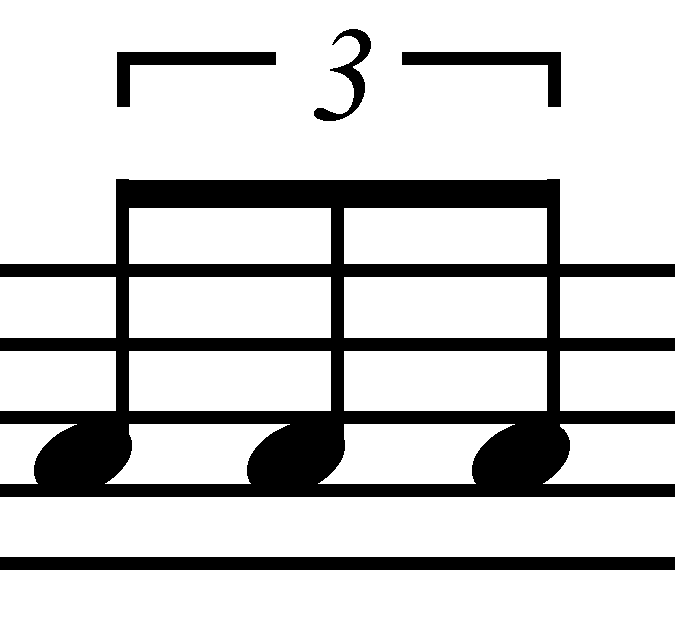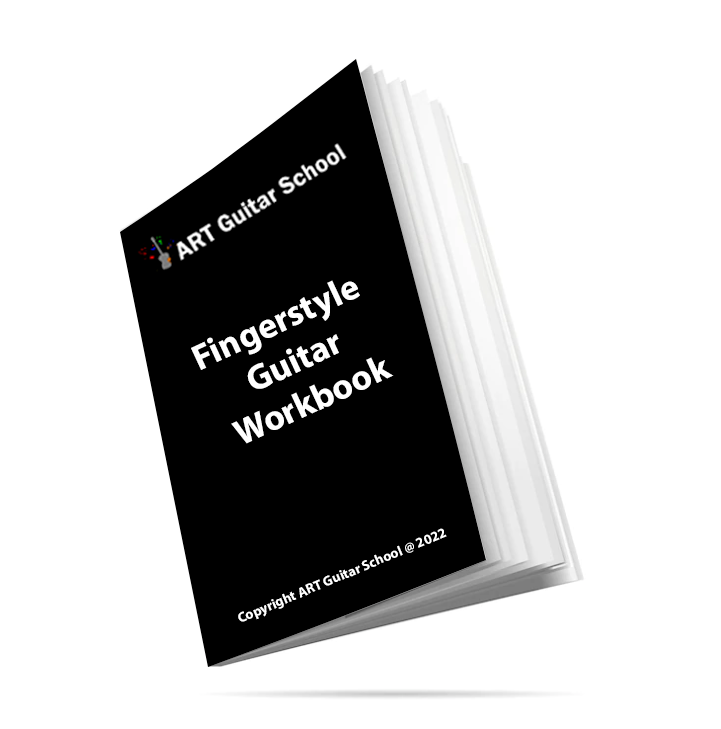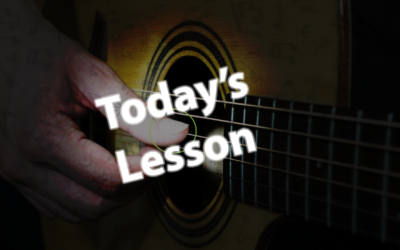One of the most common questions in regards to rhythm is how to play a triplet picking pattern. In order to do so you must first understand how a triplet works.
A triplet is split evenly into three parts within a quarter note. It’s like squeezing 3 eighth notes into one beat however, the duration of each is now slightly shorter due to the limited amount of time to fit each note within that beat.
Rhythm #1
Here is a quarter note pattern to start with. Pluck each note as one beat.
We added a half note at the end to fulfill the measure.

Rhythm #2
Now let’s try an eighth note pattern. Pluck two notes for each beat. They must fit evenly within the quarter note on the down and up beats.

Rhythm #3
Finally, this is the triplet pattern. I would recommend started by plucking only the first string with this rhythm. Count the rhythm as “one and ah, two and ah”.

Here is a video on popular finger picking patterns to start with:
If you were having trouble making the trip it’s even within the beat try using a metronome set a quarter notes 40 BPM and practice playing three notes within each beat.
FOLLOW US ON
Get our FREE Fingerstyle Workbook!
RELATED BLOG POSTS
Guitar Vibrato Techniques
Vibrato is a subtle yet expressive technique that adds depth and emotion to your guitar playing. By mastering different vibrato techniques, you can enhance your phrasing, create dynamic and expressive melodies, and develop your own unique playing style.
To start practicing vibrato on the guitar, begin by learning the basic wrist vibrato technique. Place your fretting hand on the neck of the guitar and use your wrist to bend the string back and forth, creating a subtle pitch modulation. Practice playing slow and fast vibrato to develop control and flexibility in your wrist.
Next, experiment with different vibrato styles, such as finger vibrato or whole-hand vibrato. Each technique produces a slightly different tone and texture, so try out various approaches to find the one that best suits your playing style.
You can also practice vibrato exercises by playing scales, arpeggios, and licks with vibrato, focusing on incorporating the technique into your phrasing. Experiment with different speeds, widths, and dynamics to create a wide range of expressive vibrato effects.
By incorporating vibrato techniques into your daily practice routine, you can enhance your phrasing, expression, and overall musicality on the guitar, becoming a more dynamic and emotive player.
Guitar Timing Practice
Timing is a crucial aspect of playing the guitar, as it allows you to play in sync with other musicians and create a cohesive and tight sound. By practicing timing exercises regularly, you can improve your sense of rhythm, develop your internal clock, and enhance your ability to play with precision and groove.
To start practicing timing on the guitar, begin by playing along with a metronome or drum machine. Start at a comfortable tempo and focus on playing precisely on the beat, in time with the click. Gradually increase the tempo as you become more comfortable with the exercises.
Next, work on developing your internal clock by practicing rhythmic subdivisions and syncopated patterns. Focus on playing evenly and smoothly, maintaining a steady pulse throughout the exercises. Practice counting out loud or clapping along to the rhythm to improve your sense of timing.
You can also practice timing exercises by playing along with backing tracks or songs in different styles and genres of music. This will help you become more familiar with different rhythmic patterns and improve your ability to play in a variety of musical contexts.
By incorporating timing exercises into your daily practice routine, you can improve your sense of rhythm, develop your internal clock, and enhance your overall musicality on the guitar.
Guitar Speed Building Exercises
Building speed on the guitar is a common goal for many players, as fast and fluid playing can add excitement and energy to your music. By practicing speed-building exercises regularly, you can improve your dexterity, accuracy, and overall technical proficiency on the instrument.
To start building speed on the guitar, begin by practicing scales and arpeggios at a comfortable tempo, focusing on clean and even articulation. Use a metronome to help maintain a steady tempo and gradually increase the speed as you become more comfortable with the exercises.
Next, work on developing muscle memory by practicing repetitive patterns and sequences. Start slowly and gradually increase the tempo, focusing on smooth and controlled movements. Be sure to maintain proper form and technique to avoid injury and ensure efficient playing.
You can also practice speed-building exercises using techniques such as hammer-ons, pull-offs, and alternate picking. These techniques can help you improve your overall speed and fluidity on the guitar by promoting efficient and economical movements.
By incorporating speed-building exercises into your daily practice routine, you can improve your dexterity, accuracy, and overall technical proficiency, becoming a more versatile and expressive player.




0 Comments